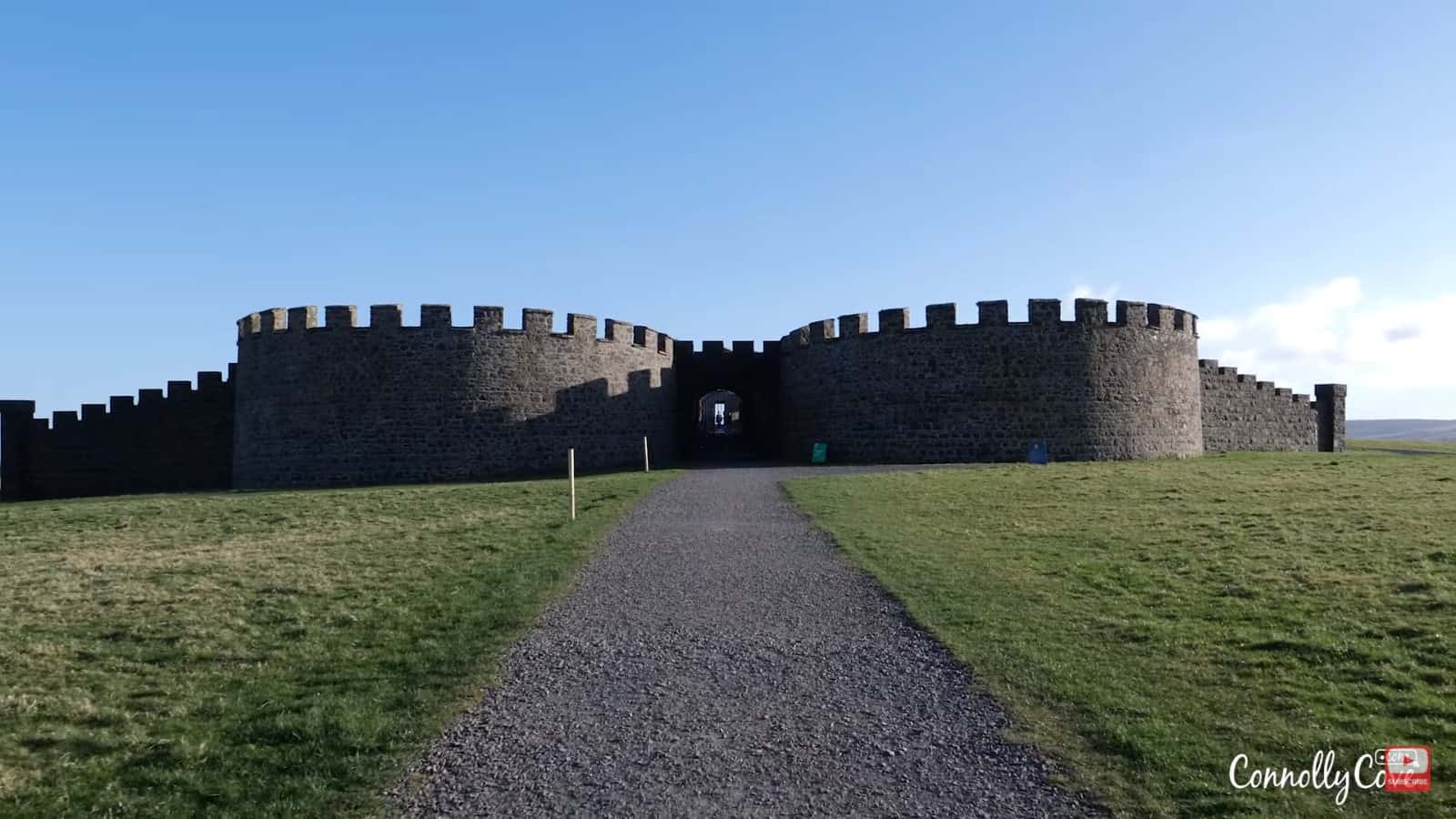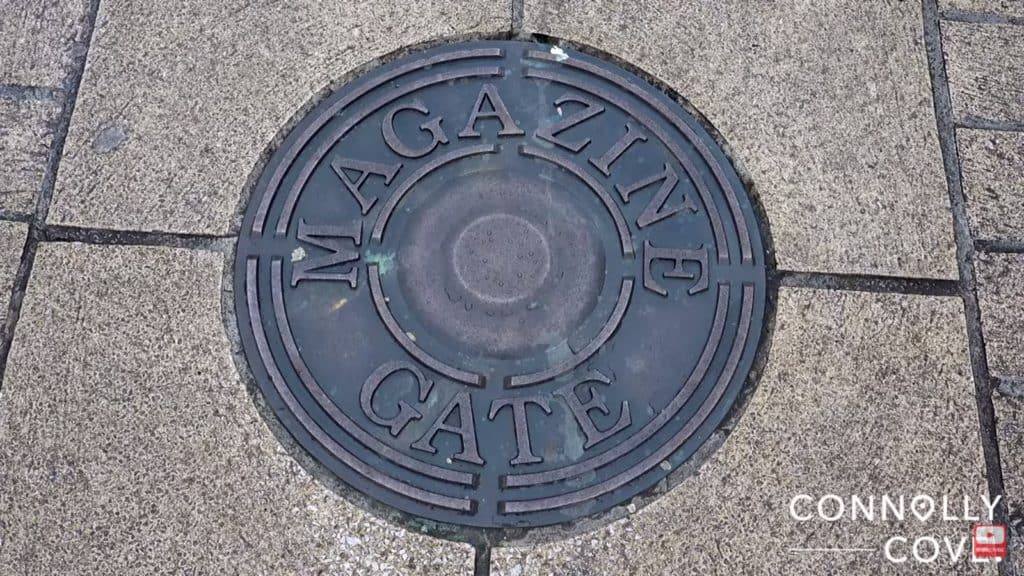County Derry: An Insight into Fascinating Nature

Updated On: April 05, 2024 by ConnollyCove
With a vast and breathtaking landscape covering an area of some 798 square miles, County Derry is one of the most alluring counties in Ireland. Officially known as Londonderry, it is perched on the northwest coast of Northern Ireland.
Situated between Lough Foyle to the west and the River Bann to the east, the county of Derry was named and created after the city on the banks of the Foyle of the same name. The allure of Oak Grove County (as it is called) is wrapped up in its beautiful scenery and tranquillity, mixed with vibrant cultural and historical attractions, action, adventure, and a robust literary heritage.
In Ireland, the county may be called Derry or Londonderry. That’s because the names of the city and county in Northern Ireland are the subject of a naming dispute between Irish nationalists and unionists. Generally, although not always, nationalists favour using the name Derry, and unionists use Londonderry.
The Heart of Derry
To the south are the forested glens of the Sperrin Mountains, while to the north and east is the spectacular coastline of Benone Strand. Benone Strand is Ireland’s longest beach, with seven miles of wide-open sand and surf. Along the way, the coast ebbs and flows from the nearly oceanic Lough Foyle to the dramatic cliffs near Castlerock.
Additionally, since it is adjacent to County Donegal in the Republic of Ireland, Londonderry has always been strongly tied—economically and culturally—to its traditional neighbour. As such, it has quite a strong sense of Irish identity, including a big Catholic majority.
History of Derry
The Irish Doire name means oak grove and refers to a mythical tree that grew on the banks of the Foyle.
In the 6th century, a Christian monastery was founded on the Hill of Derry. Allegedly, the site was granted by a local king with a fortress. A similar fortress can be seen at the spectacular Grianan of Aileach, a few miles west of the city, and now resides in County Donegal.
According to a legend, the monastery of Derry was established by the great Irish saint Colmcille/Columba. St Columba’s Long Tower is another fundamental Derry church. Built in 1784, it was the first Catholic church erected in the city after the momentous events of the Reformation and plantation. It is decorated in a brilliant neo-Renaissance style.
Mac Lochlainn Dynasty
On the contrary, although the Vikings sailed up the loughs and rivers of this area, the monastery of Derry escaped the worst effects of their raids. Derry’s medieval heydays were in the twelfth and thirteenth centuries.
When the local Mac Lochlainn dynasty moved into the settlement, the county prospered under their patronage: the population grew, the monastery and its school thrived, and prestigious buildings were erected. With the decline of the Mac Lochlainns, some of whom claimed to be kings of all Ireland, Derry Ciralso sank into unimportance.
Siege of Derry
On 18 April 1689, King James I came to Derry and summoned the city to surrender. Some of the more determined defenders rebuffed and fired at the King. As a policy of no surrender was confirmed, the Jacobite forces outside the city began the famous siege. For 105 days, the city suffered appalling conditions as cannonballs and mortar bombs rained down. Famine and disease also took their terrible toll.
Conditions for the besiegers were no better, and many thousands of people died, both inside and outside the walls. The cannons used to defend the city can be seen on the walls and at other places around the city. Finally, at the end of the summer, a relief ship broke the barricading ‘boom’ which had been stretched across the river, near where the new Foyle Bridge now stands. The siege was over, but it has left its mark on the city’s traditions to the present day.
City Walls of Derry
However, during James I’s plantation of Ulster, the livery companies of London took it over. Who built the defensive walls that still surround the city? Interestingly enough, the city walls are amongst the best-preserved fortifications in Europe.

The city’s layout reflects the original town plan several hundred years ago. In 1609, an agreement was made with the Corporation of London for rebuilding Derry, hence the introduction of the name Londonderry.
The city was rebuilt in the eighteenth century, and many of its fine Georgian-style houses still survive. George Berkeley, Ireland’s most influential philosopher, was Dean of Derry, and another well-known and eccentric cleric, Frederick Augustus Hervey, the Earl of Bristol, was Bishop of Londonderry. Hervey, the so-called Earl Bishop, was responsible for building the first bridge across the Foyle in 1790.
County Port
During the eighteenth and nineteenth centuries, the port of Derry became a vital embarkation point for Irish emigrants setting out for America. Some of these founded the colonies of Derry and Londonderry in New Hampshire.
By the middle of the nineteenth century, a thriving shirt and collar-making industry had been established there, giving the city many of its fine industrial buildings. Four separate railway networks emanated from the city, the interesting history of which can be examined at the Foyle Valley Railway Centre.
Border City
With the partition of Ireland in 1921, Derry unexpectedly became a border city. Amelia Earhart gave the city a much-needed boost when she landed there in 1932, becoming the first woman to fly solo across the Atlantic. Her connection with the city is reflected in a display at the Amelia Earhart Cottage at Ballyarnett.
A tragic part of Derry’s history took place on 30 January 1972 with the events of Bloody Sunday when British Army paratroopers opened fire on crowds of peaceful marchers, killing several bystanders.
Derry’s Fascinating Nature
Ness Country Park
In the steep, wooded Glen of the Burntollet River, southwest of the county, lies Ness Country Park. This area consists of 55 hectares of mixed woodland and open parkland that extends along both sides of the Burntollet River. With these 55 hectares of mixed woodland, open parkland, and scenic woodland walks, the park stretches over 7km of stunning scenery and riverside juggling.
Riverwatch Visitor Centre & Aquarium
Riverwatch Aquarium and Visitor Centre is a great tourist attraction located just outside Derry City Centre. The aquarium includes many types of fish, including lobster, crabs, starfish, coalfish, and Blenney’s. It also contains many other marines, freshwater fish, and shellfish, continually changing its livestock. The centre also hosts exhibitions about the country’s rivers, loughs, and coasts.
Ness and Ervey Woods Nature Reserves
This nature reserve provides the opportunity to explore a wonderful and peaceful woodland, a gorge, and the breathtaking scenery of a waterfall. Ness Wood is named for ‘an las’ or Ness, meaning waterfall. It is widely acknowledged as the highest waterfall in Northern Ireland.
Set in the Burntollet Valley within Ness Country Park, the nature reserve provides stunning walks as the paths wind through the canopy of oak, ash and beech woodland along the Burntollet River to the Ness waterfall.
The Sperrin Mountains
The Sperrin Mountains are located in the northwest of Northern Ireland, in counties Londonderry and Tyrone. They form northeast-to-southeast-aligned ridges, including the central Sperrin Ridge. The highest peak is Sawel Mountain, at 678 metres.
The natural asset of the mountain range, mixed with the unspoilt landscape of winding rivers, sun-swept valleys, and scenic lakes, makes this region recognised as one of the most breathtaking geographical areas of rural Ireland.
Derry Food
Derry is as beautiful as it is dripping with history – and its food and drink scene isn’t too shabby either. Boasting some genuinely deadly eateries and watering holes, Derry has anyone visiting or residing in it covered for any sustenance they wish to indulge in.
You can taste over 20 different foods and drinks, from mouth-watering local Street Food to exquisite fresh fish and delectable sweet treats with refreshing local beers and beverages.
Most Popular Places
Mussenden Temple
Mussenden Temple is one of the most impressive coastal locations in the world. It is perched literally at the edge of a cliff, which falls away from the rocks and the beach far below. It can be found north of the manorhouse, Downhill Demense, along a well-sealed pathway, straight from the castle exit toward the sea.
Vast and awe-inspiring views of the harsh headland create a sense of uncertainty, dread, and mystery. The appeal of this “delightful horror” is reflected in the inscription around the dome of the temple: “Tis pleasant, safely to behold from the shore/ The rolling ship and hear the tempest roar.”
The Causeway Coastal Route
The Causeway’s breathtaking scenic route travels from Belfast to Derry and takes in towering cliffs, silent glens, sleepy hamlets, picturesque fishing villages, and a UNESCO World Heritage Site. Another exhilarating place of interest is The Carrick-A-Rede Rope Bridge, initially hung there by salmon fisherman to check their nets.
The walk across is safe but thrilling. Perched on basalt cliffs 30 meters above the ocean, Dunluce Castle couldn’t be more fabulous. No wonder why this castle was used as a shooting location for Game of Thrones.
The Jungle NI
Nestled in an enchanting woodland in the very heart of Northern Ireland, just 45 minutes from Belfast, The Jungle is the perfect location to engage with life and put to test your sense of daring and adventure. Furthermore, it is a leading outdoor adventure centre offering exciting activities, events and funky accommodation suitable for all ages.
The Tower Museum
The Tower Museum is undoubtedly the Jewel in the Crown of Derry’s museums. It is in the city’s heart, inside the walls, opposite the Guildhall. The Tower Museum is one of Derry’s top visitor attractions. The museum has two main exhibitions (“Story of Derry” and “La Trinidad Valancera ─ An Armada Shipwreck.”) And hosts a comprehensive program programme of touring exhibitions and events throughout the year. The museum was opened in 1992 and is centred around the O’Doherty Tower, a significant landmark in the city.
The Tower Museum takes its visitors on a high-tech audiovisual narrative tour of the Story of Derry. From the first evidence of human habitation in 7000 BC through to the troubles and the peace process, it is all there, exemplified by models and a wide range of artefacts.
The Story of Derry is told not just through the place but also through the people that Derry has produced and inspired. This is combined with a frank and forthright approach to the many traumatic incidents in the city’s history to create an overall experience that has seen the Tower Museum receive several awards.
County Derry has retained plenty of “old world” charm over the years, so making time for a stopover there should be gratifying. There are many things to see and explore. All in all, it is quite a pleasant Irish county town for a walk and some snapshots, and there are some decent (ancient and modern) entertainment venues there, too.
Have you ever been to the County Derry? What were your favourite attractions or landmarks? We would love to hear about your experience 🙂
Also, don’t forget to check out other places and attractions around Northern Ireland: Guildhall Derry| Halloween in Derry| Bogside Murals| Peace Bridge in Derry|






